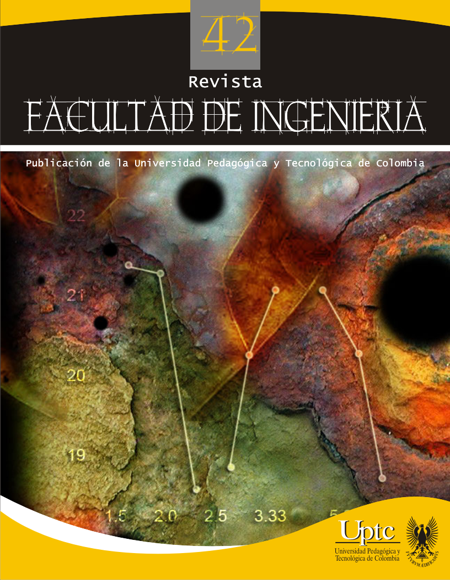Development of a physical simulation method of steel welds for fatigue crack propagation studies, on heat affected zones

Abstract
In order to study the fatigue crack propagation in the Highly Affected Zone (HAZ) of structural steel weld joints, test specimens of 90 mm x 49.5 mm x 7 mm in size were used to carry out the simulations, for which a special procedure was required to be developed in the Gleeble system. By doing so, the fine grain zone, the coarse grain zone and the multi-pass zone of a weld joint were successfully reproduced separately, on different samples of the corresponding base metal, produced by FCAW. The simulated zones were reproducible, homogeneous, defect-free, residual-stress-free and large enough, besides their microstructural characteristics (such as grain size and phase percentage) were very close to their real counterparts, which made it possible to study the actual effect of HAZ microstructure on the fatigue crack propagation rate in these zones for the first time. Therefore, the development enabled to significantly applications and the advantages increase, that this technique may have, while allowing to improve the understanding of fatigue behavior in steel weld joints.Keywords
fatigue crack propagation, HAZ microstructural variation, HAZ physical simulation, structural steel welding
References
- J. Barsom and S. Rolfe, Fracture and fatigue control in structures: applications of fracture mechanics. United Kingdom: Butterworth-Heinemann, 1999. DOI: https://doi.org/10.1520/MNL41-3RD-EB
- D. F. Atehortua-López, “Propagación de grietas por fatiga en uniones soldadas por FCAW de aceros de bajo carbono y aceros de baja aleación y la aplicabilidad del ultrasonido como herramienta de monitoreo en este tipo de estudios”. Tesis de doctorado, Facultad de Ingeniería, Universidad del Valle, Cali, Colombia, 2016.
- T. Lassen and N. Recho, Fatigue Life Analyses of Welded Structures: Flaws. London: Wiley-ISTE, 2006. DOI: https://doi.org/10.1002/9780470612149
- ASM International Handbook Committee, ASM Handbook: Fatigue and Fracture, vol. 19, ASM International, 1996.
- Y. Adonyi, “Heat-Affected Zone Characterization by Physical Simulations”, Welding Journal, vol. 85 (10), pp. 42-47, Oct. 2006.
- J. A. Gianetto, F. Fazeli, Y. Chen et al., “Microstructure and Toughness of Simulated Grain Coarsened Heat Affected Zones in X80 Pipe Steels”, 10th International Pipeline Conference, Calgary, Canada, 2014. DOI: https://doi.org/10.1115/IPC2014-33254
- A. Polyakov, D. Gunderov, V. Sitdikov et al., “Physical Simulation of Hot Rolling of Ultrafine Grained Pure Titanium”, Metallurgical and Materials Transactions B, vol. 45 (6), pp. 2315-2326, Dec. 2014. DOI: http://dx.doi.org/10.1007/s11663-014-0133-9. DOI: https://doi.org/10.1007/s11663-014-0133-9
- M. Rahimian, S. Milenkovic, L. Maestro et al., “Physical Simulation of Investment Casting of Complex Shape Parts”, Metallurgical and Materials Transactions A, vol. 46 (5), pp. 2227-2237, May. 2015. DOI: https://doi.org/10.1007/s11661-015-2815-6
- Z. Gao and J. Niu, “Study on microstructure and impact ductility of simulated weld HAZ of high-strength wear-resistant steel NM360”, Reviews on advanced materials science, vol. 33 (3), pp. 232-237, Nov. 2013.
- B. Liu, J. Qu and W. Sun, “Effects of thermal cycle on mechanical properties and fractography in HAZ of HQ130 steel”, Acta Metallurgica Sinica, vol. 17 (3), pp. 274-278, Jun. 2004.
- C. Zhou and C. D. Lundin, “A Comparison of Published Haz Thermal Simulation Methods Used to Derive Weld Haz Thermal Cycles”, Acta Metallurgica Sinica, vol. 13 (1), pp. 223-232, Feb. 2000.
- G. Atkins, D. Thiessen, N. Nissley and Y. Adonyi, “Welding Process Effects in Weldability Testing of Steels”, Welding Journal, vol. 81 (4), pp. 61s-68s, Apr. 2002.
- R. Blondeau, Metallurgy and Mechanics of Welding: Processes and Industrial Applications. London: ISTE Ltd. and John Wiley & Sons, Inc., 2008.
- G. E. Dieter, Mechanical Metallurgy: SI Metric Edition. Boston: McGraw-Hill, 1988.
Downloads
Download data is not yet available.